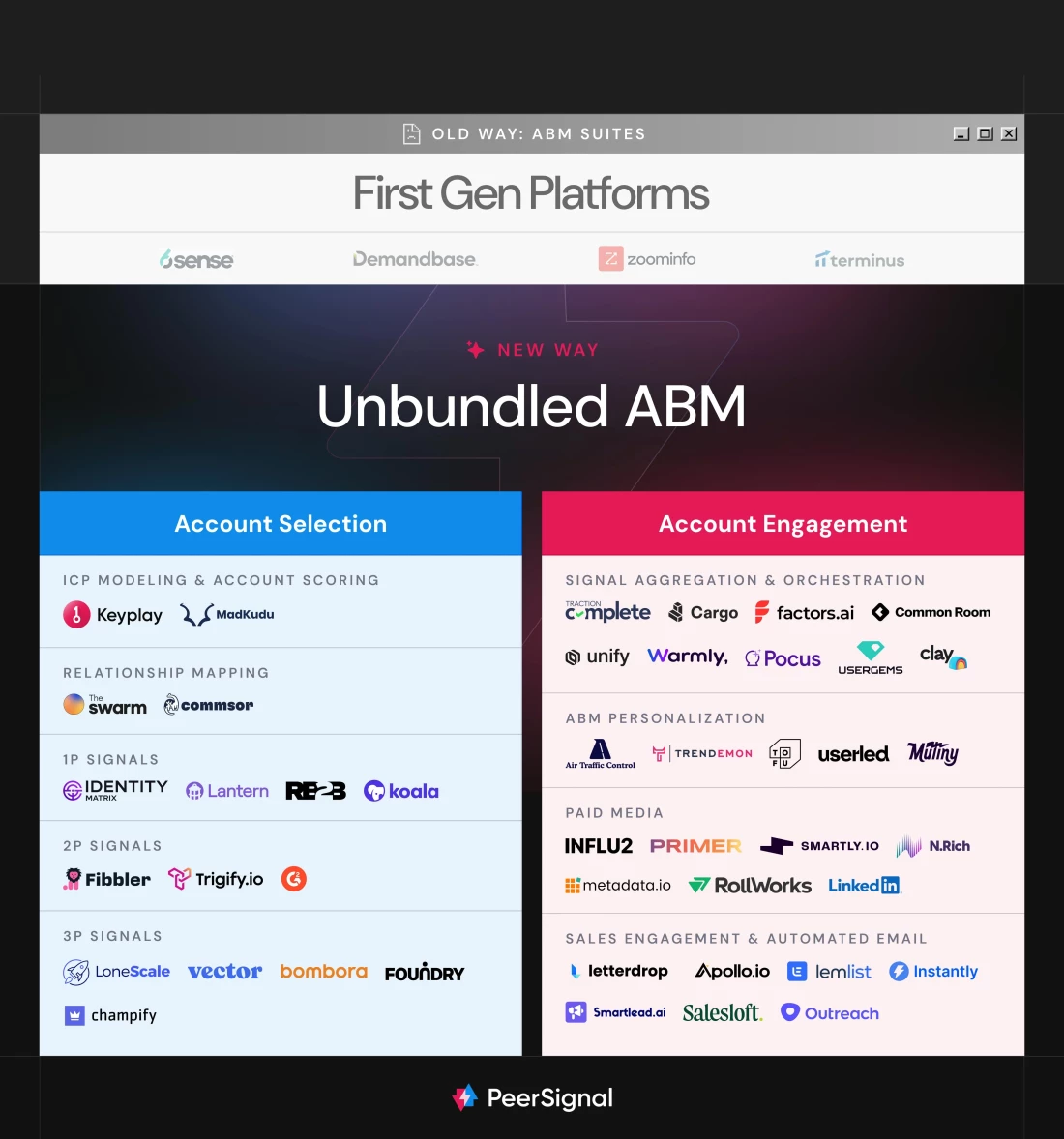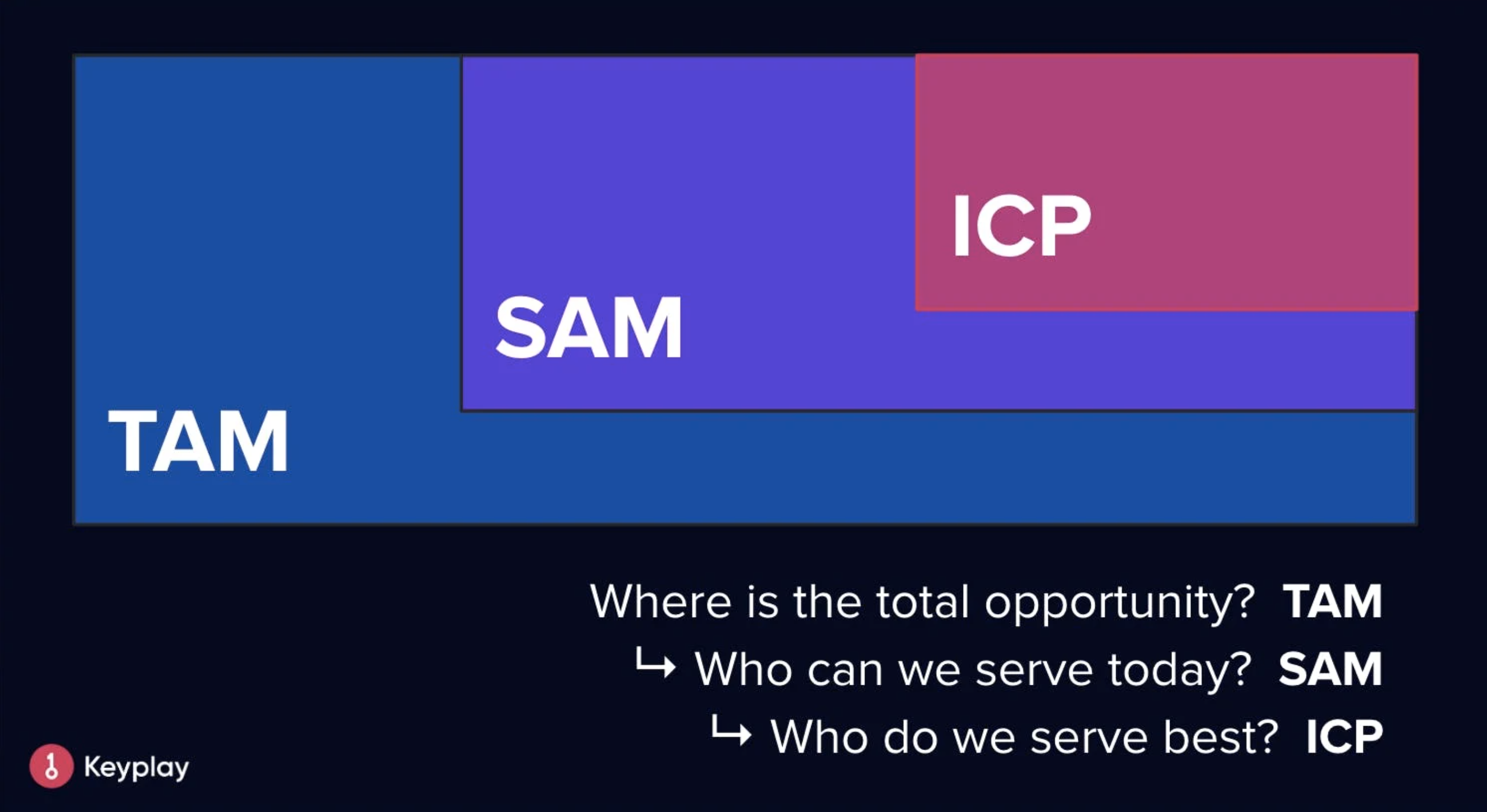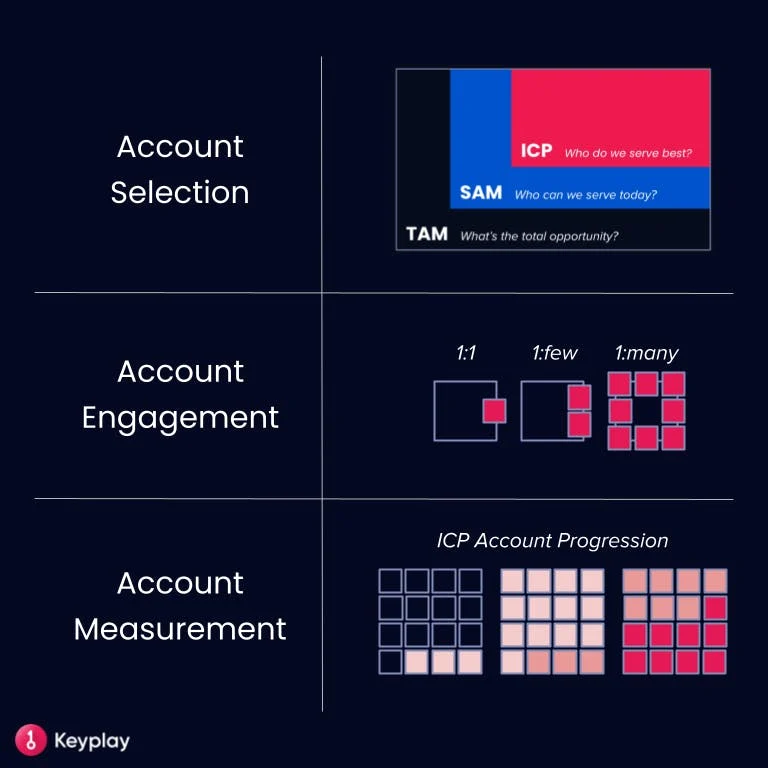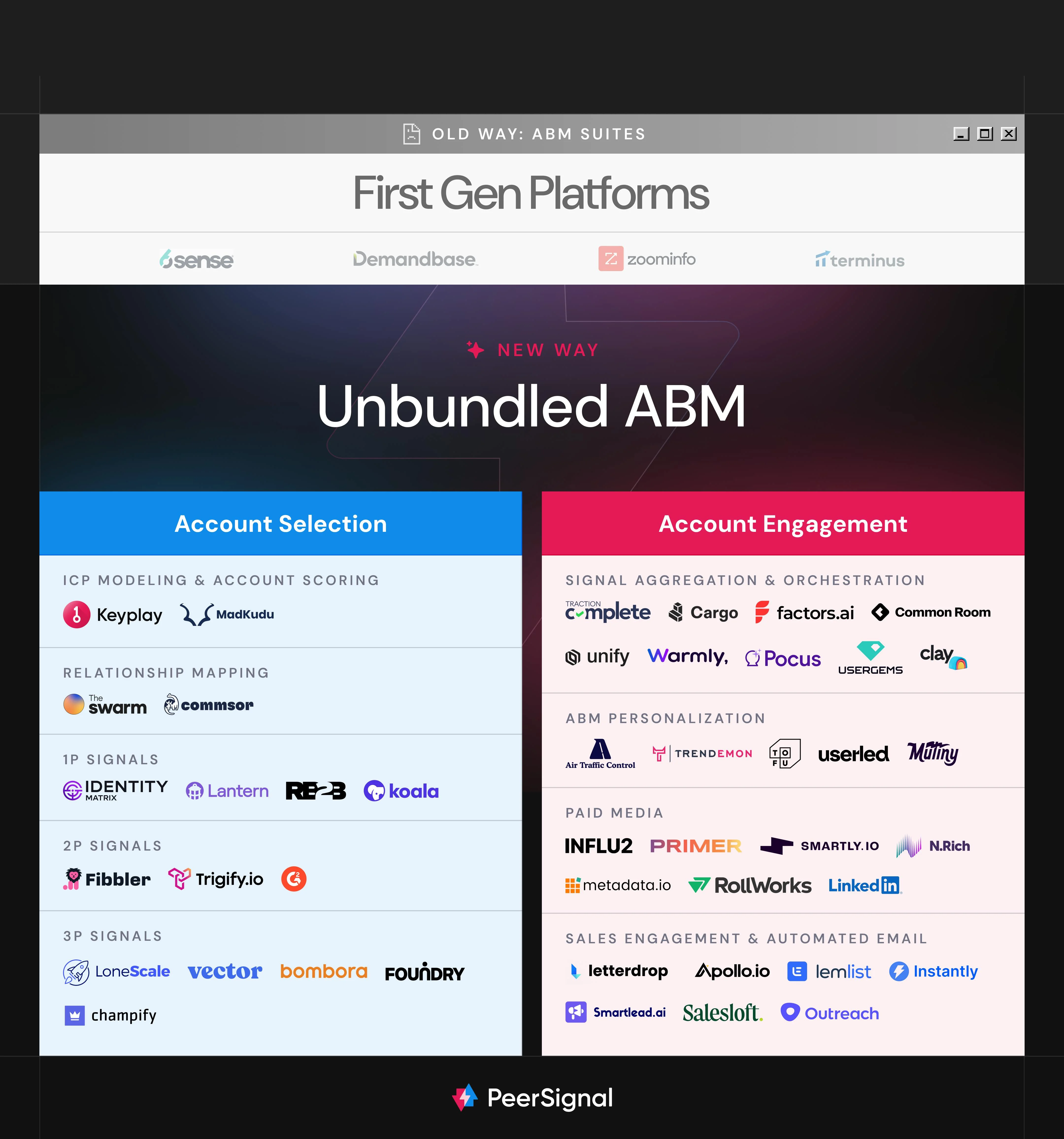Three weeks ago, we shared a work-in-progress market map to help you unbundle ABM. It resonated with thousands of practitioners who are pro-ABM but skeptical of “ABM Platforms”.
Today we’re sharing our new and improved Unbundling ABM Market Map. We listened to feedback and used it to hone our categorization, create new ones, and add new players.
What’s new:
Based on feedback, we made a couple of big changes & improvements (spreadsheet here). We:
Broke signal creators into 3P, 2P, and 1P. The simple definitions we're working with:
1st Party signals come directly from a customer (website visitors).
2nd Party signals come from a partner who collected the signal directly from a customer (LinkedIn engagement).
3rd Party signals come from a broker who aggregates 2nd Party signals (X account read a blog post about Y category).
Combined Signal Aggregation & Orchestration. Almost everyone who is aggregating signals is moving into orchestration (enabling action on those signals).
Added more players. We added 14 new players. All based on recommendations from trusted sources. We aren’t covering every single tool, just the ones that practitioners we trust recommend. (that being said, if we’re missing anyone, let us know!)
The general trend remains.
We all want a simple and effective framework for ABM.
Folks know they need to do ABM but unless they’re an enterprise org, with enterprise budgets, the large ABM platforms are simply overkill.
They’re too expensive, too broad, and too difficult to adopt.
Meanwhile, wonderful modern solutions are popping up that solve specific pain points elegantly, and for much less.
Modern GTM operators and marketing leaders are adopting this new modern stack. They’re “Unbundling ABM”.
Unbundling ABM, The Modern ABM Stack
Accompanying spreadsheet here. |
This is the modern ABM stack. More powerful point solutions are giving operators an edge– at a fraction of the cost of bloated platforms. 6sense is still a piece, but not the whole answer.
We see a couple of forces behind this shift.
ABM is a brilliant strategy, but it’s become a tainted buzzword.
ABM has always been a core B2B strategy, but in the last decade became a vendor category. As the “ABM Platform” players gained traction, the market rushed to technology, often skipping strategy.
Over-priced ABM platforms have spent a decade spinning a fundamental B2B concept into an overly complex buzzword soup to justify their insane prices.
Smart CMOs are becoming skeptical of the platforms and their promises.
1.) The “ABM platform” promise is too broad.
Early adopters use 6sense as an intent provider but don’t value the 27 other modules. This is especially true in mid-market.
2.) The shine is off “Intent” data.
Intent works great for some, but it’s not a panacea. Topic-based searches are a smart way to generalize the concept, but are not always a true signal of buyer intent. Sometimes the topic searches are nonsense. Sometimes you need something more specific. And it’s never a shortcut for having an ICP program.
3.) Salespeople are skeptical
ABM platforms are usually sold into marketing, but at some point, you need sales to adopt. 6sense has mixed reviews from sellers. There are fans. You don’t get to $200M+ without many successes. But a lot of sales teams are questioning the utility. And if the reps don’t use it, can the business case hold up?
The reality: ABM shouldn’t start with a $100K piece of software. It should start with strategy.
Setting a strategy first, then deciding what tools are needed. Not the other way around.
The Strategy: Account Selection, Engagement, Measurement
Kyle Poyar outlined this simple breakdown wonderfully when he wrote about Mutiny's ICP Marketing strategy. |
Operators like Kaylee and Kyle and other CMOs we’re talking to on private Zooms are waking up.
ABM doesn't require a $100K piece of software.
It can be simplified to 3 things:
1.) Account Selection
As Ryan Narod once told me, “Targeting eats messaging for breakfast”.
Instead of filling your CRM with “leads,” or choosing accounts based on gut, selecting accounts based on a backtested ICP Model ensures that you’re always working the right accounts.
Modern point solutions like Keyplay now allow you to get to a level of granularity with your fit scoring that used to be impossible (which is enabling a new level of execution).
All else flows downstream of account selection. So this is the most important piece of the puzzle.
2.) Account Engagement
Instead of targeting personas or firmographics, you target specific accounts. Then you engage those accounts with 1:1, 1:Few, or 1:Many outreach.
Modern point solutions are letting us deliver 1:1-like experiences at scale so that we can “surround sound” accounts we know are a fit (either now or in the future).
3.) Account Measurement
Instead of celebrating MQLs, celebrate progress with ICP accounts. Setting goals based on how you move target accounts through the buyer’s journey lets you align on the metrics that matter.
Modern practitioners are using point solutions to execute this strategy better, without the complexity or cost of larger ABM platforms.
Here are the tools they’re using.
Players: The Modern ABM Stack
This market map is a work in progress that we plan to continue to update as conditions evolve. Please comment or reach out if you think we’re missing anyone! |
Get the accompanying spreadsheet here.
This is an exciting time to be in B2B GTM. A new wave of tools are emerging that are enabling a completely new level of execution. And this is happening in our little corner of the world, ABM.
We’re excited to track this new wave as it continues to build momentum and legibility.
Wrap Up
Modern GTM operators and marketing leaders are adopting a simpler modern ABM stack. They’re “Unbundling ABM”
ABM is a brilliant strategy, but it’s become a tainted buzzword.
The smartest CMOs realize this and are returning to fundamentals (account selection, account engagement, account measurement).
They’re using these tools (spreadsheet) to execute the fundamentals better, for less.
Are you rethinking how you approach ABM?
I'd love to hear how you're approaching it. Leave a comment on LinkedIn or reply here with your thoughts.
Best,
Adam




